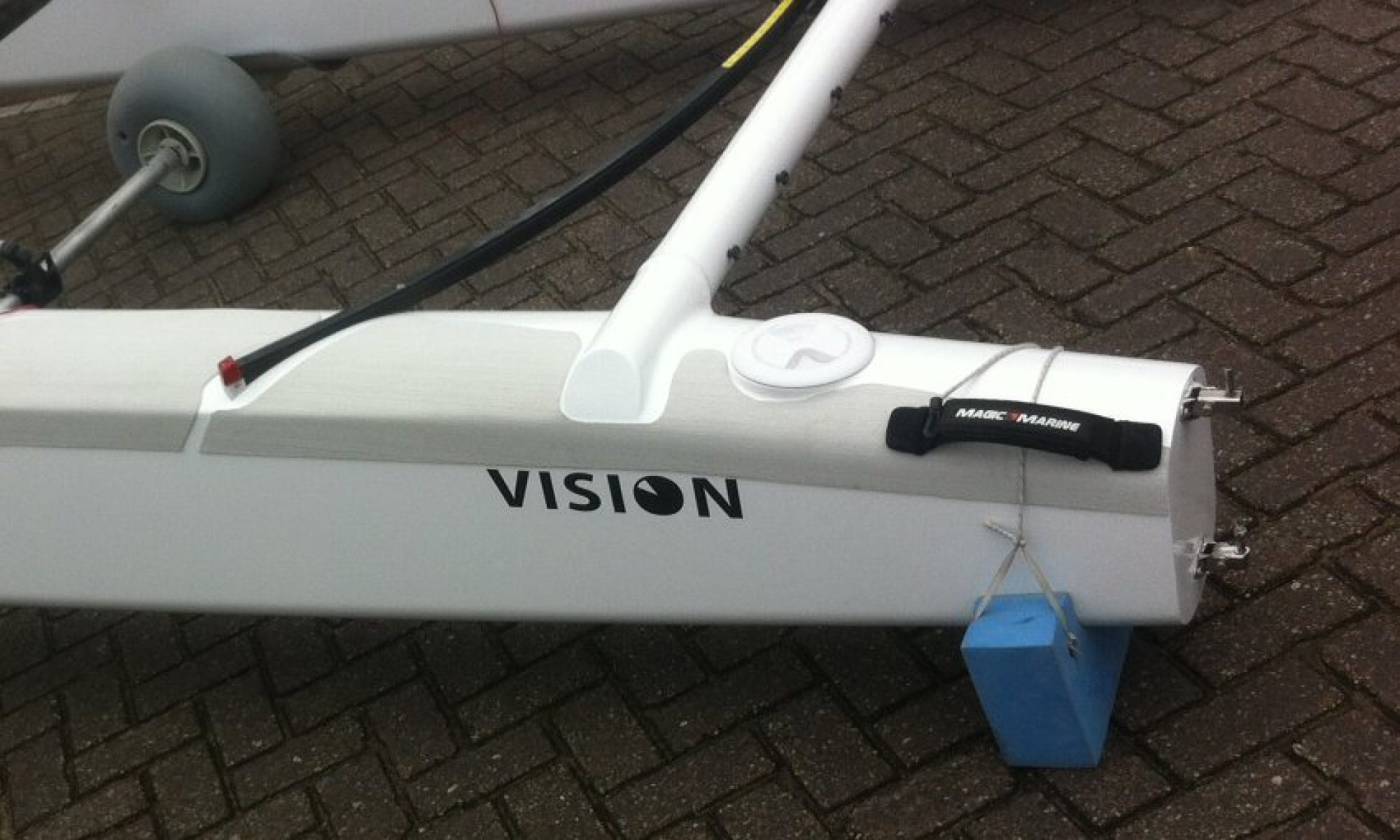This article is meant to give some insight what makes the carbon mast work.
A mast is not only a devise to keep the sail up. As a matter of fact it has to do a lot under severe circumstances. This we can see when we analyse all the forces it has to cope with.
We take the A-class catamaran as an example:
- The compression of the Cunningham, which can be as high as 600kg This is only in the mast section.
- The compression of the stays which is around 500kg
- The compression caused by the sailor in Trapeze 90kg
- The compression by the mainsheet 450kg
- The compression of the spreader wires 500kg
The bending forces are also a severe load. The free top of the mast causes the most load in the region between the hound and the spreaders. This is caused by the sail and the main sheet.
This shows that the force of the mast onto the mast step can be around 1000kg, but in the mast it can be 2200kg between the hound and the mast foot. These are maximum forces and these forces peek under the most severe circumstances which is when you nose dive into a wave downwind with everything full on. Of course you will take of the mainsheet load and it is sensible to have the Cunningham load off for a part. But this shows why you will break the mast when you hit the water pitch poling.
How is the mast able to do the job under normal sailing?
First of all you need a decent mast section. This has been standard on most of the masts being 60mm across and 145mm in length direction. The wall thickens is variable over the length of the mast with more material in high load areas and less where the mast load eases of like near the top. It varies between 2mm and 1mm. This is the big advantage of carbon when you lay up in the normal 6 layers pattern. The layers are from different material like woven cloth an unidirectional layers and also the weight of each layer can vary. Extra reinforcements are put where the parts are mounted.
The layers are also put in a pattern which can be in different directions to get the best out of the carbon with the eye on weight saving.
Each mast maker has developed his own patterns to make the mast stay up and still have the good bend to be able to trim the sail The mast should mot bend too early to lose power in the light, but the sailor should be able to get the sail flat when the wind gets up. This recipe is the big secret.
The mast weight has to be kept low because it stands up 9 meter into the air and when the boat is heeling it is one of the forces trying to capsize the boat. A typical Saarberg standard mast is 8kg and the other mast makers have problems to beat that. Most of them are 9kg or even more.
We hope this gives you more understanding of what goes on aloft.
